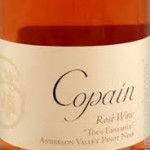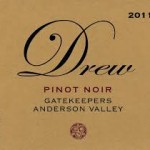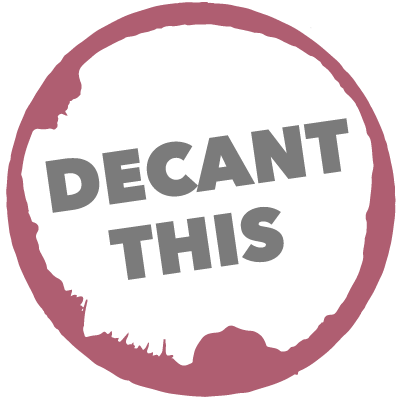Cork this, Mr. Keller
I used to really really really want to eat at the French Laundry. Then a few years back, I got an opportunity to dine there, but it conflicted with an already planned family outing that was very important to me (and might have given me lifelong brownie points with the other participants — at least the ones who didn’t think I was certifiable).
In the ensuing years, my interest has waned. I love Thomas Keller’s cooking; his Ad Hoc is among my favorite Napa eateries. But meals that last five hours hold little appeal for me anymore, the fixed prices have skyrocketed, and I always have been turned off by the restaurant’s ludicrous reservation policy.
Now comes word that the Laundry and Keller’s New York restaurant, Per Se, are charging $150 corkage fees. That’s more than 99 percent of us are willing to pay for an actual bottle of wine.
What’s especially galling about this snotty arrogance is that the markups on the Laundry’s wine list are truly beyond obscene. A half-bottle of Patz & Hall Hyde Vineyard  Chardonnay is $110, almost twice as much as a whole bottle goes for at the winery ($58). Copain’s delightful Tous Ensemble rosé is $70 at the Laundry; the average at Wine Searcher is $22. The 2000 Giuseppe Quintarelli Amarone della Valpolicella Classic is $825 at the Laundry and $444 at Wine Searcher.
Chardonnay is $110, almost twice as much as a whole bottle goes for at the winery ($58). Copain’s delightful Tous Ensemble rosé is $70 at the Laundry; the average at Wine Searcher is $22. The 2000 Giuseppe Quintarelli Amarone della Valpolicella Classic is $825 at the Laundry and $444 at Wine Searcher.
I could go on, but you get the picture. You could throw a dart at the Laundry’s list and know that it will hit (a) a really good wine, and (b) an egregiously shameless (or shamelessly egregious) ripoff. Basically, and crudely, Mr. Keller has his customers by the short hairs. It’s completely legal larceny, and no array of doubtlessly wondrous dishes at the Laundry or Per Se would be able to wash the bad taste out of this mouth.
So none of Mr. Keller’s haut haught cuisine for me, thank you.
The decision admittedly is made easier by the fact that I can get amazing food for much less money and exponentially less hassle. I had indescribably delicious braised pork cheeks for lunch yesterday at the fantastic new restaurant Brasserie Zentral. The cost: $16. We lapped up an astounding array of delectable dishes recently at San Francisco’s State Bird Provisions, which last year was named the nation’s best new restaurant by Bon Appetit and at the James Beard Awards; the tab for five of us was less than what it costs one person to eat at the Laundry.
It reminds me of the approach that I generally take to wine purchases at the spendy end. Once something gets over $80 or so, I’m out. But that decision is made easier by the process, and the results of seeking out cheaper wines that are just as good.
 For years, I bought Aubert, Williams-Selyem and Kosta-Browne, but they have continually jacked up prices to make the wines out of (my) reach. But I discovered Drew’s pinot noirs, which I find every bit as good as those three wineries’ offerings, and for a ton less money. You have to do some research and legwork, and find other enthusiasts who are seeking out the same kind of stuff, but you can end up with the same quality.
For years, I bought Aubert, Williams-Selyem and Kosta-Browne, but they have continually jacked up prices to make the wines out of (my) reach. But I discovered Drew’s pinot noirs, which I find every bit as good as those three wineries’ offerings, and for a ton less money. You have to do some research and legwork, and find other enthusiasts who are seeking out the same kind of stuff, but you can end up with the same quality.
In the restaurant world, with so many fabulous chefs plying their skills in every city, that process is even easier. And yes, I’d rather eat four meals at Restaurant Alma or Herbsaint or Husk Nashville or Zuni Cafe than one at the Laundry, never mind the corkage.
The world is full of nuance, but my views on corkade fees are pretty black and white: Restaurants should waive corkage fees, one-for-one, on each bottle customers purchase. If a customer brings in a bottle (that’s not on the restaurant’s list) and buys one from the list, no corkage for that. Bring in two, buy two, same deal. If a customer calls in advance to clear it and brings in a bottle but doesn’t buy anything, a small corkage fee (maybe $15) is not unreasonable.
The rationale one most often hears from restaurateurs for outsized wine-list markups is that they have to make big margins on beverages because they don’t make any on food. Well, that’s their problem, and they shouldn’t make it wine’s problem; they are hating on wine, I say.
Charge more for the food, damnit! Otherwise, you’re asking customers who like wine/beer etc. to subsidize those who don’t.
Here endeth today’s rant.
5 Responses
Leave a Reply
You must be logged in to post a comment.




Pingback : Terroirist: A Daily Wine Blog » Daily Wine News: Need To Know
Pingback : Restaurants, Corkage, Trust & Cheating | Wine Industry Insight
Well said. I thought all of us in the food and wine business were on the same team. I guess not. That is insulting to charge that much for corkage and to have customers pay so much for wines that retail for 1/4 the price. Last time I knew, wine is a food in beverage form.
A) Please don’t anyone react to this by suggesting in any way that this comment is meant to support, justify or excuse a corkage fee or wine list price that is excessive in the opinion of any reader. I will actually just explain what’s going on with this.
B) See above when you finish reading below.
C) Like any business, restaurants have a budget. The top line is sales and it is made up of Food Sales and Beverage Sales. The latter is, or can be, broken down into Tap Beer, Bottle Beer, Liquor, Wine by the Bottle and Wine by the Glass. Each of these has a budgeted product cost percentage. For those not in the business, coffee, tea, soda sales are always in Food Sales. Hypothetical example: restaurant XYZ has budgeted sales of $100,000 in a month. Cost of Goods Sold is the next line on a budget (and financial statement). The remainder is the next line which is Gross Profit.
Each business has to decide ahead of time the acceptable gross profit that allows enough money left of the first line, Sales, to cover Labor (including benefits, mandatory and non), Occupancy, Insurance(s), and everything else. These typically comprise $55,000-65,000 on a $100,000 sales month for a profitable restaurant. Doing the math, what it costs the restaurant to purchase the food, wine, beer and liquor can’t really go over $30,000 on a regular basis or the investors will get restless. This means if the house pays $8.00 to put out a plate of, say, chicken (including the chicken, cooking fat, seasoning, sauce ingredients, side dishes, any condiments on the table, plus bread and butter-if that is still done) then theoretically the sales price will be three and one third times $8 (call it $27).
Sales are made of two elements: 1) number of customers and 2) the amount each customer spends-technically called Average Sales Per Guest but is commonly called “Check Average” in the business. The latter is as key as the former. $100,000 in sales could be made up of 2000 customers spending an average of $50 each. Taking info from above that $50 can only cost the restaurant $15. Good restaurants plan all of this as much as possible. They have a plan for generating the 2000 guests and a plan for having them spend $50. It is some manager and some chefs job to make this happen. Short of that on any regular basis will result in either someone getting moved along to there next “opportunity” or the place closing or making a concept change.
I too have decided not to dine at certain place because of the price of the wine on the list. One place had an average bottle price exceeding $300, no half bottles, and basically no wines by the glass. And only 12 wines (out of a couple thousand) priced under $100. That place is out of business.
But they were following their budget. I just wasn’t part of their budget.
I don’t read everything good out there about wine, much as I would love to. I have never read anyone writing from the insiders perspective. Which is to say, “how much did the wine cost the restaurant?” All comments I have ever read commenting on the price of wines on a list relate that price to the retail price of the same wine. And this means praising the pricing because it is closer to the retail price or decrying it because the pricing exceeds the retail by so much. Outside of a very few places that combine a retail wine outlet with a restaurant/wine bar-not one place in a hundred probably-there is no consideration on the part of the wine buyer/pricer in a restaurant of the retail price. It simply doesn’t exist as a factor. When a consumer makes the retail v. wine list price comparison that consumer is doing something that makes complete sense the them, but has nothing whatever to do with how a restaurant is going to mark up a wine. Back up to the theoretical example: house pays $12 for a wine and then charges $40 if the Cost of Goods Sold budget is 30% of the sales price. In the retail world that wine sits on the shelf when not on sale for $16-$18. There are many subtleties I will skip here but these are the basic principles.
When a guest consumes wine with dinner at the restaurant but doesn’t purchase the wine from the list, choosing to bring in their own, the house may feel at risk of losing sales and/or not meeting the budget for Sales. I neither know nor care what the Cost of Sales budget is at the French Laundry but I can assure all readers that those costs are budgeted and both the mark up on the wines and the corkage fee policy is all about hitting the required numbers. A reminder, the most important budgeted item, in order to end up with the profit desired, is Sales.
As I mentioned earlier in relation to the restaurant I didn’t go to because of the price of wines, I was not going to be part of their plan, their budget. Same with you and the French Laundry. These places have decided, essentially, that they will get along without us. It’s their call, and ours, too.
We each must, and let’s face it, do, decide which restaurants plans we will be part of for any a various legitimate reasons. Yes or no on food style, service style, ambience, perception of value including portions and prices, ease of access including location and reservation policies, variety of choice. Bill, you make a great case for it being OK for anyone to decide not to be part of the plans of the French Laundry or any other place and not having any reason to regret that. You well note that we are blessed with so many other choices that will make us happy. Lets run with that.
And since this is me, just one more thing: no low mark up on a wine is good if the wine isn’t good. A good value list has choices that are good wines combined with a budget that allows mark ups/prices that are easier to, um, swallow. Sorry. And if we want to pay retail rather than wine list price, please let’s visit our local reputable wine retailer and then cook for one another.
Great perspective, Ken. Stuff all of us who haven’t been inside the biz can learn from.